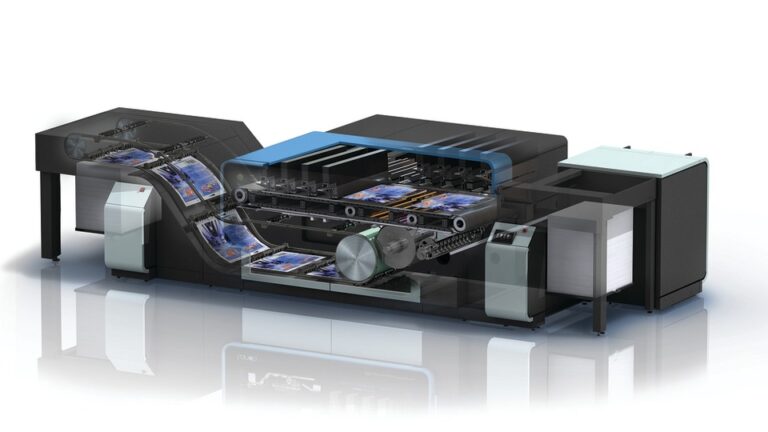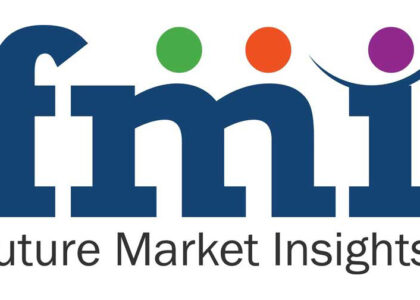With drivers propelling growth in the printing industry, the nanographic printing market is poised for anticipation. The surge in emerging economies worldwide, coupled with substantial lifestyle changes, serves as a catalyst for the market’s expansion. Nanographic printing technology has notably met customer demands for enhanced print quality, thus driving its adoption. Customers are increasingly prioritizing print quality, a demand effectively addressed by nanographic printing technology. This emphasis on quality underscores the technology’s pivotal role in meeting evolving customer expectations and solidifying its position as a transformative force within the printing industry.
The MEA region’s nanographic printing market is set to witness a significant rise in its revenue contribution from profits in GCC countries and South Africa. Over the forthcoming years, Japan is also likely to keep its stagnant growth in the Nanographic printing market.
Recent years have witnessed a rise in demand for printing owing to increase in manufacturing industry across the globe. This resulted in an increase in demand for digital printing which is expected to grow over the forecasted period. Nanographic printing is expected to grow on the backdrop of markets using Nano technology.
Request Sample Report: https://www.futuremarketinsights.com/reports/sample/rep-gb-4216
Market Drivers:
- High Print Quality: Nanographic printing technology offers high print quality with sharp images and fine details, attracting industries that require precise and vibrant printing, such as packaging and labels.
- Cost Efficiency: Nanographic printing can be cost-effective for high-volume printing due to reduced ink consumption and waste. This efficiency is particularly attractive for businesses looking to optimize their printing costs.
- Versatility: Nanographic printing can be applied to a wide range of substrates, including paper, plastic, and metal. This versatility makes it suitable for various industries, such as packaging, commercial printing, and labels.
- Environmental Sustainability: The technology often involves water-based inks, which are more environmentally friendly compared to traditional solvent-based inks. This factor can appeal to businesses and industries aiming to adopt sustainable and eco-friendly practices.
Market Restraints:
- Initial Investment Costs: Adopting nanographic printing technology may require a significant initial investment in equipment and technology. Small and medium-sized enterprises (SMEs) may find it challenging to justify the upfront costs.
- Technology Maturity: Nanographic printing technology is relatively new compared to traditional printing methods, and ongoing developments may be needed to address potential challenges. Some businesses may hesitate to adopt the technology until it reaches a higher level of maturity.
- Competition with Existing Technologies: Established printing technologies, such as offset and digital printing, are well-established and widely used. Nanographic printing needs to compete with these existing methods, which may hinder its rapid market penetration.
- Speed Constraints: In some cases, nanographic printing systems may have limitations in terms of printing speed compared to certain traditional printing methods. This could be a significant factor in industries where high-speed production is a crucial requirement.
Global Nanographic Printing Market – Key Players
Presently Nanographic printing is majorly offered by Landa Corporation Ltd, which is based in Israel. Owing to its benefits and high quality of printing, the global printing market is expected to become more competitive, with more players focusing on R & D and coming up with better and faster printers.
Nanographic Printing vs. Traditional Printing Methods
How does nanographic printing fare against traditional methods? Let’s explore:
- Speed and Efficiency: Nanographic printing boasts impressive speeds, outpacing traditional methods like offset printing.
- Quality Matters: The enhanced precision and color accuracy of nanographic printing surpass the capabilities of conventional techniques.
- Eco-Conscious Choice: Reduced waste, minimal setup, and eco-friendly inks position nanographic printing as a greener alternative.
Buy Now/Purchase: https://www.futuremarketinsights.com/checkout/4216
Market Segmentations:
The global Nanographic printing market is segmented on the basis of material type and end use type.
basis of material type:
- Paper & Paper Board
- Laminates
- Metal
- Glass
- Flexible plastics
- Rigid plastics
- Others
basis of end use:
- Food and beverages
- Healthcare
- Cosmetics
- Packaging and label printing
- Others
Overcoming Challenges in Nanographic Printing
While Nanographic Printing holds immense promise, it’s not without challenges:
- Initial Investment: Adopting Nanographic Printing technology requires a substantial initial investment, making it a decision that businesses need to carefully consider.
- Color Matching: Achieving consistent color matching across different print jobs can be challenging due to the precise nature of the technology.
About Future Market Insights (FMI)
Future Market Insights, Inc. (ESOMAR certified, recipient of the Stevie Award, and a member of the Greater New York Chamber of Commerce) offers profound insights into the driving factors that are boosting demand in the market. FMI stands as the leading global provider of market intelligence, advisory services, consulting, and events for the Packaging, Food and Beverage, Consumer, Technology, Healthcare, Industrial, and Chemicals markets. With a vast team of over 5000 analysts worldwide, FMI provides global, regional, and local expertise on diverse domains and industry trends across more than 110 countries.
Contact Us:
Future Market Insights Inc.
Christiana Corporate, 200 Continental Drive,
Suite 401, Newark, Delaware – 19713, USA
T: +1-845-579-5705
For Sales Enquiries: sales@futuremarketinsights.com
Website: https://www.futuremarketinsights.com
LinkedIn| Twitter| Blogs | YouTube


